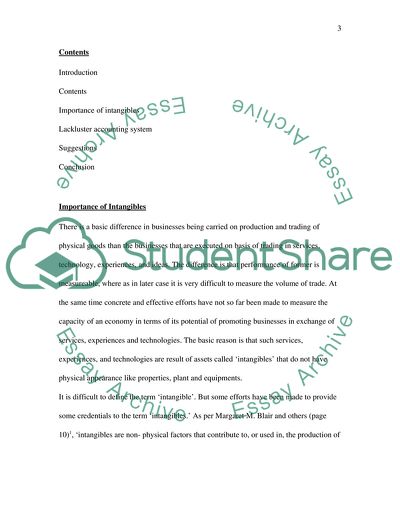Cite this document
(Intangibles Seek Due Recognition Coursework Example | Topics and Well Written Essays - 1750 words, n.d.)
Intangibles Seek Due Recognition Coursework Example | Topics and Well Written Essays - 1750 words. Retrieved from https://studentshare.org/finance-accounting/1720738-in-the-current-business-context-the-accounting-profession-has-been-criticised-for-its-lack-of-progress-in-accounting-for-the-notion-of-the-intangible-and-its-associated-performance-output-discuss
Intangibles Seek Due Recognition Coursework Example | Topics and Well Written Essays - 1750 words. Retrieved from https://studentshare.org/finance-accounting/1720738-in-the-current-business-context-the-accounting-profession-has-been-criticised-for-its-lack-of-progress-in-accounting-for-the-notion-of-the-intangible-and-its-associated-performance-output-discuss
(Intangibles Seek Due Recognition Coursework Example | Topics and Well Written Essays - 1750 Words)
Intangibles Seek Due Recognition Coursework Example | Topics and Well Written Essays - 1750 Words. https://studentshare.org/finance-accounting/1720738-in-the-current-business-context-the-accounting-profession-has-been-criticised-for-its-lack-of-progress-in-accounting-for-the-notion-of-the-intangible-and-its-associated-performance-output-discuss.
Intangibles Seek Due Recognition Coursework Example | Topics and Well Written Essays - 1750 Words. https://studentshare.org/finance-accounting/1720738-in-the-current-business-context-the-accounting-profession-has-been-criticised-for-its-lack-of-progress-in-accounting-for-the-notion-of-the-intangible-and-its-associated-performance-output-discuss.
“Intangibles Seek Due Recognition Coursework Example | Topics and Well Written Essays - 1750 Words”. https://studentshare.org/finance-accounting/1720738-in-the-current-business-context-the-accounting-profession-has-been-criticised-for-its-lack-of-progress-in-accounting-for-the-notion-of-the-intangible-and-its-associated-performance-output-discuss.


